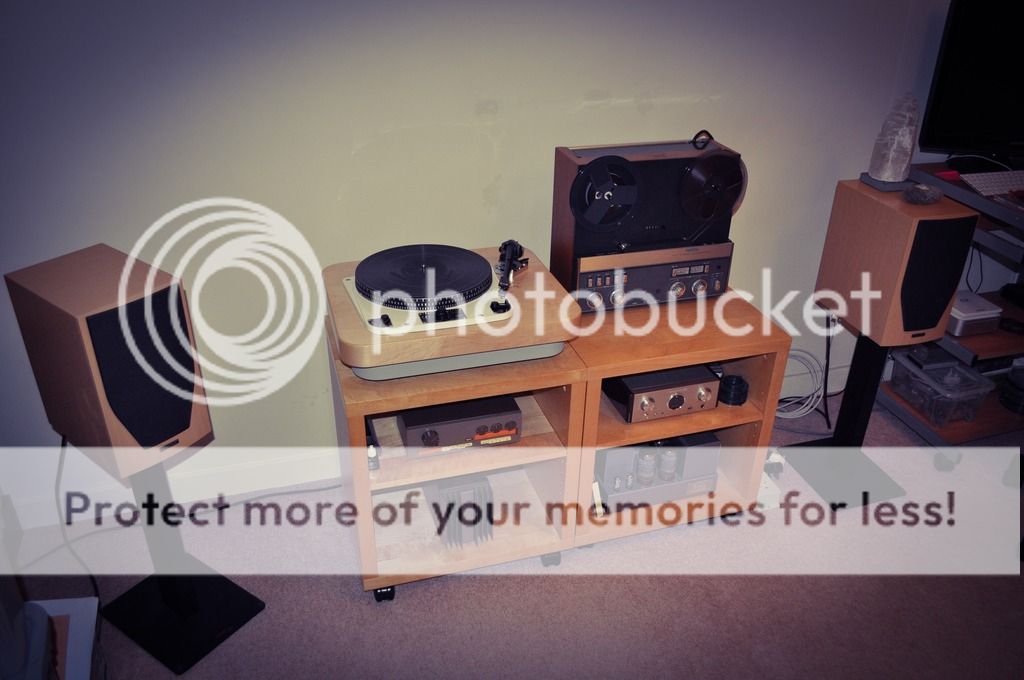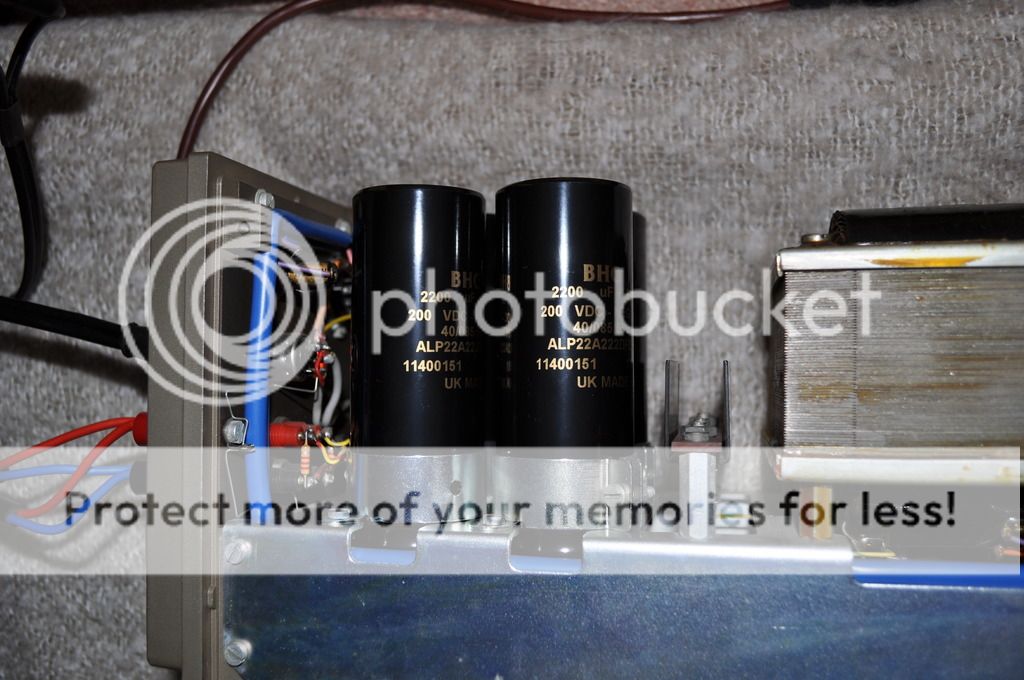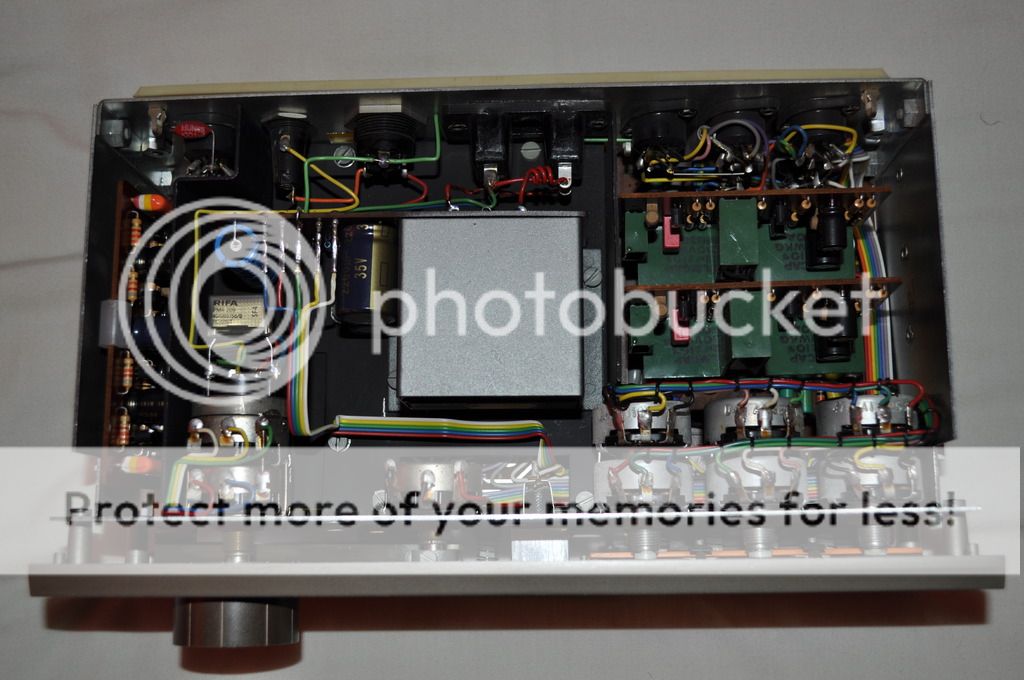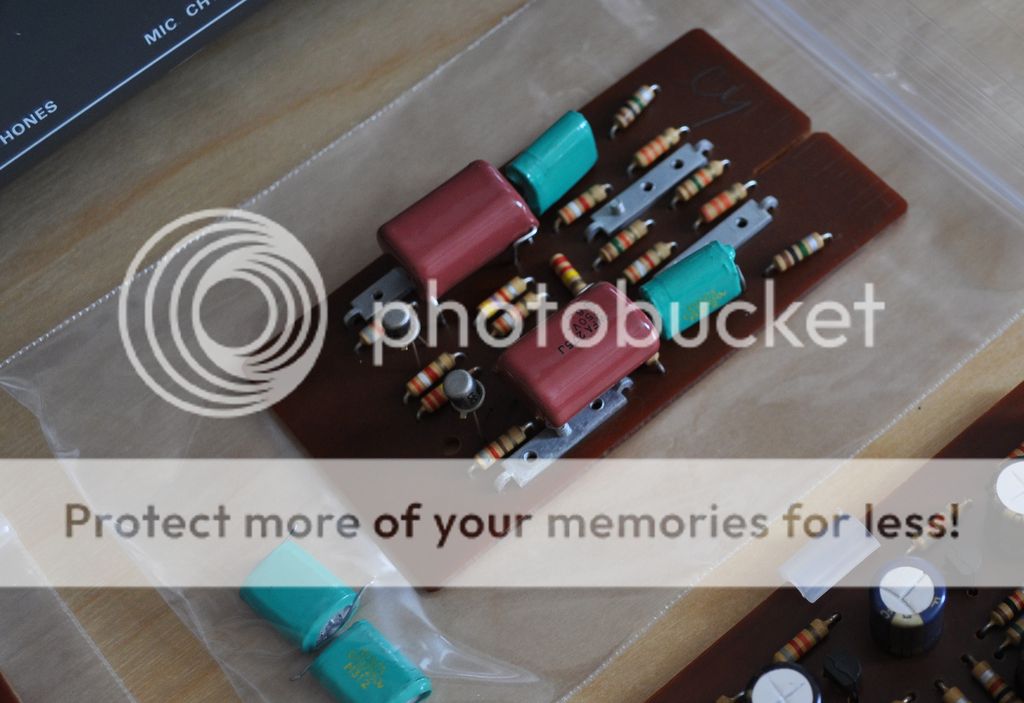John_73
pfm Member
Is the voltage on C101 stable?
I would suspect C100, C101, C104 and C106 before changing any transistors if you get music
I will measure them this evening David, though all caps are new, bar the C100 input cap.
All information to date collated below (getting a bit confusing to follow between two threads & forums):
Q303 33.5V adjustment summary:
I have replaced all electrolytic caps except C100 on the driver boards, and all adjustment pots. R130 was also replaced on both boards as that had gone high value on the left side. All four chassis mount 2000uF caps are original, as there's no sign of any bulging, leaking, and the unit has had a very easy life. I have played music through it and it sounds fabulous - zero complaints. No obvious distortions or noises. No transistors including outputs are obviously overheating.
The 33.5V setting varies constantly on the left board, and is very stable on the right.
I have already checked the following components:
R110 - fine.
R111 - fine.
R112 - fine.
R130 (replaced in both channels).
Circuit diagram for my earlier model is below. Voltages listed under R104 in the diagram measure 8.76V on my 303, and above R111 8.51V, so all OK there. PSU output voltage is a stable 67V:
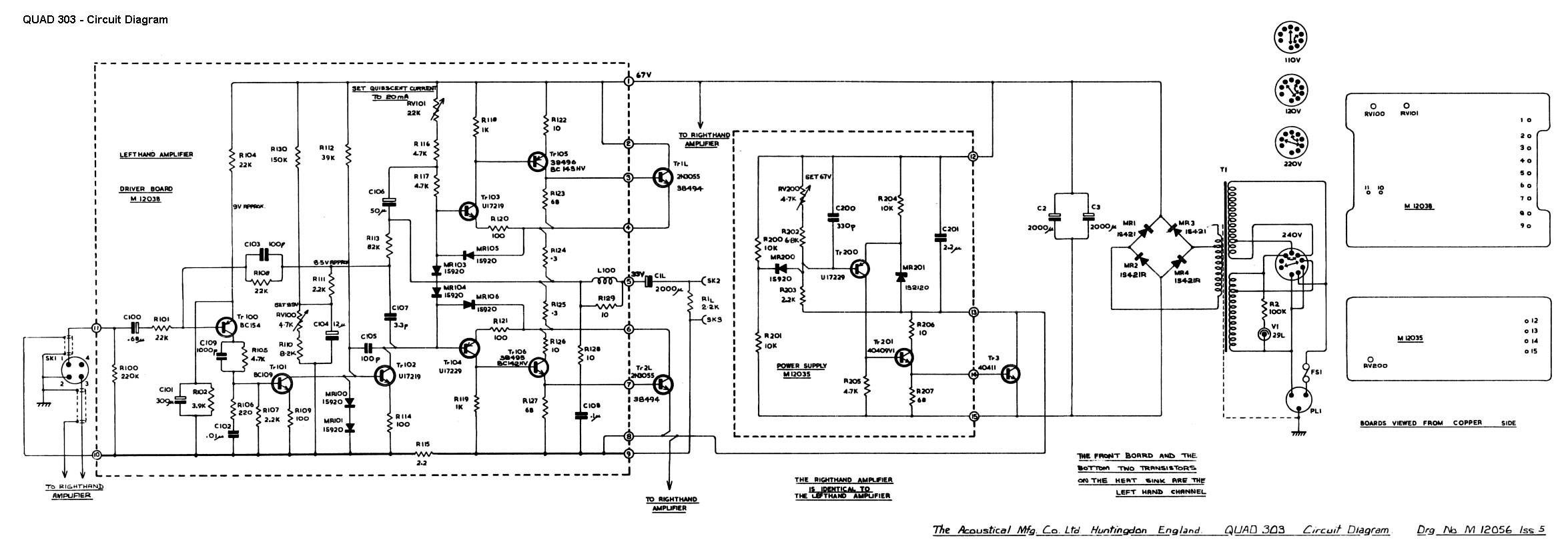
Referring to the circuit diagram, if I measure 'below' R113 (82K) I get a stable reading of 8.48 volts. Moving to the 'upper' side of R113, I get the wandering voltages, around the desired 33.5V (dipping to 31V, upto 33.85V).
UPDATE: PCBs thoroughly cleaned of old flux residue. Two very slightly suspect looking solder joints resoldered.
Disconnecting the collectors of the left channel output transistors TL1L & TL2R the voltage between pins 1 and 5 is a constantly fluctuating 33.35 - 33.70V. An improvement on the readings earlier which seems a bit weird, but there you go. Reconnecting the collectors results in the same readings.
Can set the quiescent current between pins 4 and 6 to approx. 10mV. Music sounds fine & undistorted.


